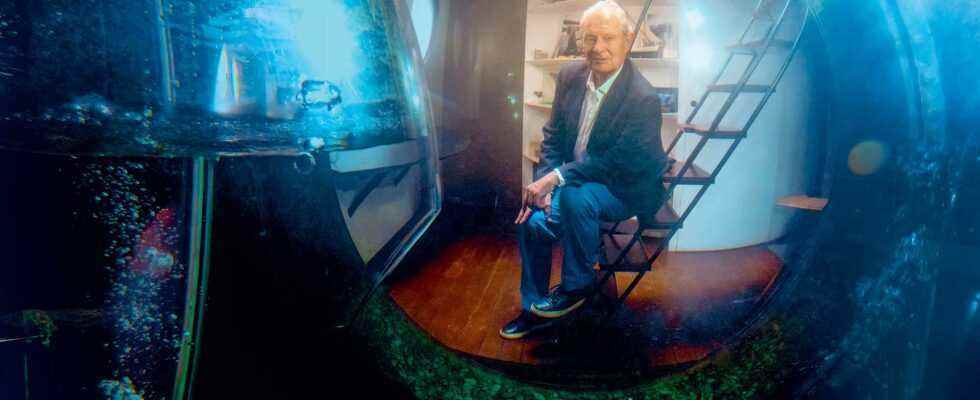To speak with Jacques Rougerie is to follow the movement of the water which rocks you from right to left. His barge is moored in the heart of Paris, he lives and has set up his architectural firm opposite the National Assembly. A setting that suits his status as an academician of fine arts more than the beaches of Côte d’Ivoire, where he spent his childhood. Because water, Jacques Rougerie discovered it before he even knew how to walk. It will be the element at the heart of his life. The sea does not scare him. Quite the contrary! Even when, one day, a wave grabs him and tosses him around. He is more fascinated than frightened.
The life of his father, Gabriel, a biogeographer, does not divert him from his destiny. The friends of the family are called Théodore Monod, Haroun Tazieff, Paul-Émile Victor… They are explorers, adventurers and scientists. And fill Jacques’ mind with marvelous stories. Then comes the shock: “The World of Silence” by Cousteau. He is 11 years old. However, he will be neither a sailor nor a diver, but an architect. The paradox is only apparent. He is convinced that the future of man is the sea. He wants to build habitats adapted to this sometimes hostile environment but from which man emerged. And where he returns.
“Eventually, we will all be ‘merians'”
After the baccalaureate, he therefore followed in parallel the architecture courses of the Beaux-Arts and those of the Oceanographic Institute of Paris. This led him, unique in the annals, to defend two theses on the same day. What does it matter if we take him for a sweet dreamer… He created the Center for Sea and Space Architecture and, in 1977, built “Galathée”, his first aquatic house. Then the “Aquabulle” where Jacques Mayol joins him (the first freediver to dive 100 meters deep), bewitched by this underwater refuge project for “amphibious walkers”.
To consult: Our special file on the heroes of the planet
With the “Aquascope” (1979), Jacques Rougerie gives eyes to boats. Portholes put the world of silence within reach of all eyes. At the same time, his terrestrial constructions are imbued with an aquatic poetry. This precursor draws on the genius of nature and draws inspiration from the living to imagine biomimetic buildings: the Sea Pavilion in Kobe (Japan), Nausicaá in Brest, the Kochi Oceanarium (India), etc. In 1992, he achieved a record (which still stands): the longest stay under the sea, sixty-nine days! It is there, in total immersion, that the idea of “SeaOrbiter” was born, a 51-meter drifting lookout that will ensure a permanent presence on the seas. “A synthesis of all the work that I have carried out over the past forty years,” he explains. And a culmination since… “in the long term, we will all be “merians”, inhabiting both the earth and its seas”.
